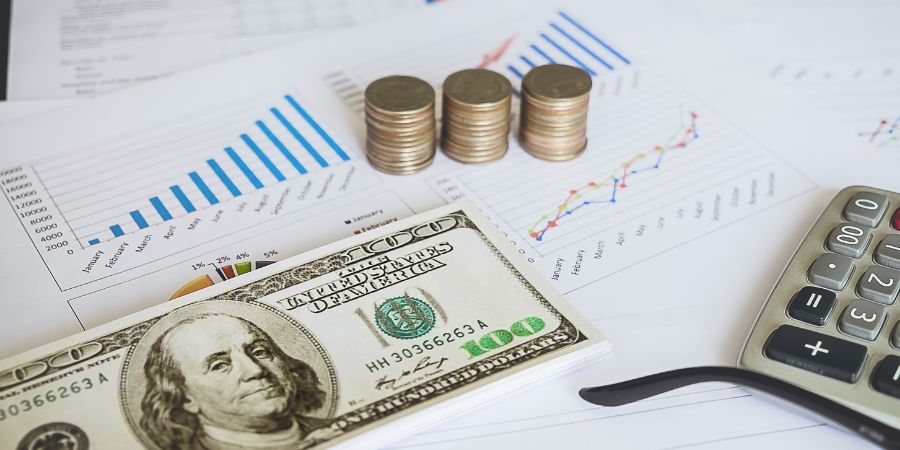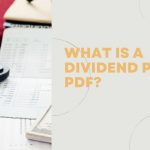Five Best Dividend Policy

Dividends are paid by companies to shareholders and act like interest payments. This means that dividends are usually viewed as investments rather than expenses, meaning that they don’t reduce the net income of a corporation. Instead, they’re classified as either capital gains or business income — dividends must be reported on Form 1040, while capital gains and business income are taxable at different rates.
The best dividend policy can be expected to provide the maximum return on investment with low risk. The goal of a dividend policy should be to provide the greatest benefit to the shareholders over time, not just at one point in time. However, dividends should also continue to be sustainable in the long term. Here is some best dividend policy.
1. Regular Dividend Policy
The default dividend policy that many companies will begin with is a regular dividend policy. This means the company will pay a regular dividend at least once yearly. A regular dividend is usually paid on the first day of the third month after the company’s financial statements are issued, although it can be paid in advance.
In some cases, dividends may be paid less frequently than once per year, but looser deadlines mean that dividends are less likely to be reduced or canceled. Many companies that follow a regular dividend policy will also provide the same amount and pay it on the exact dates each year.

2. Stable Dividend Policy
If a company’s profit is stable, it can pay higher dividends. However, stability can lead to problems as well. Companies don’t want to pay higher dividends because they will lose money. Therefore, a stable dividend policy should be used when the company’s profit is relatively stable and usually has been for at least two years.
Companies with relatively stable revenue may decrease their profits yearly, resulting in lower dividend payments. A flexible dividend policy can allow the company to make smaller dividend payments while maintaining a beneficial payout ratio.
3. Irregular Dividend Policy
A simple way to increase the dividend payout ratio of a company is to reduce it by increasing the number of dividends paid by at least 30 percent each year. Such a policy is called an irregular dividend policy because it typically doesn’t remain stable. The payout ratio will still be maintained, but the payouts will become increasingly irregular as the dividend increases.
Companies that may want to use an irregular dividend policy aren’t making much money in the first place. These companies may not make enough profit yearly to justify paying regular dividends. Increasing their dividend payout ratio can compensate for this shortfall and help maintain cash flow over time without compromising their profits, at least for a few years.
The best irregular dividend policy provides shareholders the most significant benefit over time. Companies should also pay a periodic dividend when they have sufficient capital to pay it properly.

4. Liquid Dividend Policy
A liquid dividend policy will ensure that dividends are paid at all times, regardless of what’s happening with the company’s financial health. Companies should start with a liquid dividend policy when they’re in good financial shape and have strong cash flow.
For companies that may have difficulty paying their dividends in the short term, a liquid dividend policy should be implemented to ensure long-term stability. Suppose the company’s stock price begins to drop. In that case, shareholders concerned about the dividend payment will usually sell their shares, thereby increasing the number of shares traded and lowering the stock price.
Companies with a high payout ratio will also consider using a liquid dividend policy. A high payout ratio means that there is not enough money to pay for all of the necessary expenses, including paying dividends. Those companies will also want to keep their share prices as high as possible because investors may not want to buy low-price stocks if they can’t get consistent dividends.
5. No Dividend Policy
A no dividend policy can save the company from itself for companies that are in more trouble than they realize. Companies with a no dividend policy will make all the necessary payments to keep the company afloat, especially in cases where there’s a default on loan.
A typical no dividend policy will also include managing expenses and paying employees on time. Such a policy aims to help the company get back into financial shape as quickly as possible without worrying about paying dividends during that time.
Many companies will continue to pay dividends under a no-dividend policy because they prefer not to cut their dividends and may not want to raise their payout ratio.
The best dividend policy will depend on the circumstances of each company. Companies in trouble should consider a no dividend policy to help them get back on their feet as quickly as possible.
Companies with sufficient capital and relatively stable over the past few years may want to use a stable dividend policy to ensure they can pay regular dividends while still keeping their payout ratio at a healthy level.
What are the Properties of Financial Assets?

The Properties of Financial Assets studies how the unique nature of different financial assets affects their price, use, and value. The financial markets work in many different ways and utilize a diverse group of assets for capital. Some are tangible and have a physical existence, such as stocks or gold.
Other intangible assets, such as a contract, patent, or lease, can be intangible. Many different types of financial assets are used worldwide, and understanding the major types will help you choose investments that suit your financial goals.
What Is a Financial Asset?
A financial asset refers to those assets that can be bought, sold, and held for a period with the expectation of earning profits. The returns on financial assets are generally stated as a percentage of the capital invested along with some form of interest or dividend.
Also referred to as a liquid asset, it is tradable, fungible, and claims a specific value according to its existence.

What Are the Different Types of Financial Assets?
Various types of financial assets can help you meet your financial goals. Below are different assets to choose the right ones for your needs and situation.
- Equities: Stocks are one form of ownership in a corporation. Each share is a fraction of the company and represents a claim on the company’s net assets. A corporation is owned by shareholders who buy shares and use them to vote in the manner of electing the directors and on major issues raised by shareholders.
- Bonds: They are issued by a company as a loan. Bondholders are expected to pay back the principal amount at the specified time. The interest rate payable by bondholders is based on the company’s credit rating, the bond’s maturity period, and the risk of default.
- Money market securities: These instruments are short-term debt securities that trade in narrow ranges because they are liquid and have very short maturities. The yields on these instruments are mostly government securities.
- Equity-linked Securities: An equity-linked security is a financial instrument that contains shares and a portion of the company’s assets as part of the value.
What are the Properties of Financial Assets?
A property is a characteristic that is inherent to the asset itself. The intrinsic property of an asset directly influences the price, use, and value of that particular asset. Also referred to as a characteristic of an individual asset, it is unique to that asset.
Intrinsic Properties
This property of financial assets is a characteristic that is inherent to the asset itself. The intrinsic property of an asset directly influences the price, use, and value of that particular asset. There are also other inherent properties of financial assets that affect value. The following are some of the intrinsic properties of financial assets:
- Income-generating Property: The property that enables an asset to generate income and is called an income-generating property.
- Desirability property. This refers to an asset’s unique quality or features that make it more attractive to investors. For example, a branded product can be much more desirable than a generic one; thus, its price will also be higher.
- Liquidity. It is measured by the ease and speed with which an asset can be converted into cash. For instance, government bonds are usually considered a highly liquid asset.
Market-based Properties
This is the behavior of the market in which an asset is found. The actions of buyers and sellers affect a financial asset’s price, use, and value. They are also categorized as some of the following:
- Marketability: It is a measure to ascertain the ease of trading an asset. The more active the market is for a particular asset, the better its marketability.
- Trading volume: The number of trades in an asset over a specific time period; the greater the trading volume, the greater the liquidity.
- Minting period: it is the time taken to complete a transaction for financial assets. This is usually affected by the liquidity and trading volume of an asset.
- Borrowing power: This is the availability and price of credit in a particular market. For instance, real estate has a lower borrowing power in comparison to stocks or bonds.
Investment-based Properties
This refers to the financial returns on investment. Some of the properties of financial assets are based on their expected return. For example, expecting a stock to return 8% may be regarded as a very good investment.

Pros and Cons of Properties of Financial Assets
The properties of financial assets have certain advantages and disadvantages, which will determine how a particular asset is used in the market and what kind of return to expect. There are positive and negative attributes for each property of a financial asset.
Advantages:
- Liquidity: When financial assets are available in a liquid market, their prices can be easily determined.
- Capital requirement: One of the main reasons for the existence of financial assets is to provide a return on capital.
- Return: Assets with a higher return on investment will be more attractive to investors because they provide greater investment potential.
Disadvantages:
- Trading period: The longer the trading period, the higher the cost of borrowing. Thus, this property may not be very useful in a particular case.
- Yield: This is the return that is provided by an investment. But the market and its liquidity may affect the yield on assets.
There are many properties of financial assets that majorly impact the value and price of that particular asset. The properties of financial assets affect their price, use, and value to a large extent. It is essential to consider all these features before investing in an asset.
What is a Dividend Policy PDF?

A dividend policy is a plan that determines the percentage of earnings to distribute to shareholders. A company’s dividend policy can be considered an agreement between the company and its shareholders that defines how much of the company’s profits will be distributed over time. Particular factors — like expected earnings growth — may affect this decision. Still, generally speaking, companies should strive for distributions that maintain a stable payout ratio over time and provide some income level for investors.
Benefits Of A Dividend Policy PDF
1. A stable payout ratio
A stable payout ratio means that the company distributes an income equal to its earnings. It helps keep shareholders happy, as they won’t lose their investments to the effects of changes in management or the economy when they sell their shares.
2. Maximized return on investment
Corporations value that investors will only sell when they see a decrease in their profit or a decline in dividends. Keeping a stable payout ratio means maximizing your return on investment and ensuring you are paying your shareholders accordingly.

3. Accurate financial metrics
Having a stable payout ratio can give you a better idea of how well the dividend formula works and allows for more accurate financial metrics about the company. Objective metrics can help shareholders better evaluate a corporation’s performance and prospects.
4. Dividend growth
Research strongly suggests that dividend policies that grow dividends over time lead to more robust stock price increases than those that do not. It is because it builds confidence in the company and its management, creating a positive feedback loop that drives up stock prices. By maximizing the return on investment, stable dividend distributions also increase your chances of generating a rising average share price, which leads to higher total returns for all shareholders.
5. Improved balance sheet
When a corporation’s payout ratio is equal to or greater than 100%, its financial health is in danger. On the other hand, stable and growing distributions create shareholder value and improve a company’s balance sheet by increasing shareholder equity. These factors, which are primarily influenced by the dividend policy, help ensure that a company continues to be able to pay shareholders without depleting its resources.
6. Increased stability
Beyond the fact that stable distributions are suitable for financial health and balance sheets, they also help ensure that a company can provide dividends in the future. If payments decrease significantly, maintaining the same profitability and credibility cannot be easy. Research has found that companies with predictable profit distributions show more excellent stability and fewer headwinds than those with less stable dividend policies.

7. Increased capital allocation
Allocating more capital to shareholders directly correlates with better financial health, as I’ve found in my research of companies’ dividend policies. It was one of my original motivations for researching this particular topic!
8. Maximized return on capital
Corporations can distribute more than 50% of their earnings to shareholders through dividend payments, which means that they are effectively disengaging from the business. I’ve found in my research that corporate distributions should not exceed a company’s retained earnings — the amount of money that is available for reinvestment into the corporation. If a company has a high payout ratio and consumes too much or too little of its resources, this could lead to trouble down the road.
9. Long-term financial security
Stable and growing distributions are not only good from an investment perspective but also for long-term financial security. Although a corporation can do fine without dividends, the shareholders are often left in the dark. Therefore, investing in companies with policies that perform well helps to ensure your financial security over time.
10. Higher valuation
Research supports the theory that high-dividend stocks trade at higher valuations than their low- or no-dividend counterparts. Investors view dividends as a sign of company stability and will pay more for them. This sort of valuation premium can be beneficial when trying to determine how much value an individual stock or portfolio is worth — it just means you can afford to buy more shares while maintaining a certain level of diversification!
Final Verdict
First, it is essential to understand that different types of automated dividend reinvestment systems (DRIS) differ in their capabilities and settings.
The DRIS choice should be based on one’s risk tolerance, profitability expectations of the investment, the intended use of the DRIS funds, and desired performance metrics.
Dividend Reinvestment Plan has been a preferred method for many investors to implement and maintain a dividend income stream. To get the most out of DRIP investing, as well as limit any possible negative impacts from such investment, it is essential that investors understand their options, including a review of each available DRIS service provider.
What Are the Steps of Working Capital Management?

Capital management is so vital to a company’s success that it should be considered a key component in the operation of any business. This is because the capital is responsible for the work of the business, which in turn yields profit. With the help of a sound capital management strategy, companies can reinvest in their businesses and expand their reach without the fear of loss. Working Capital Management is a capital management strategy that allows a company to manage its current resources wisely for better use. Here are the steps of this management strategy.
1. Negotiations
The first step in working capital management is to negotiate with the suppliers and vendors if a discount deal can be reached. An excellent negotiating skill is required as it leads to savings on inventory. Based on the volume of business and negotiated price, the company’s future cash flows can be forecasted and formatted into an information statement that indicates the length of time it will take for inventory to be sold. It also shows how much risk is involved in holding on to the current stock should it exceed its useful life or market value.

2. Credit
Traditionally, companies used to take credit from suppliers for the items needed in their business. But today, companies have more options for purchasing the products they need. The company can get a line of credit from the bank, allowing them to make purchases without immediately paying. The company can pay the debt over time through deductions made at specified intervals.
This is much better as it gives the company time to use the stock before paying for it. It is better to pay off debts before due dates because the company will be charged with interest charges. Besides, the company will be able to purchase products that are still below their market value.
3. Expansion of Plant and Machinery
A good capital management system involves the expansion of plants and machinery. According to the statement, a company can foresee how much time it will take before improving the plant or machines. To know when expansion is expected, some businesses may consider following up with the government on new plans for their industrial area, which should also contribute to future growth and development. The business needs to know if any further requirements for its industry will increase demand for its products. This, in turn, brings about price increases in their products and high cash inflow into the industry’s business.

4. Excess Inventory
Because a company can benefit from the lower prices it can obtain from its suppliers, it will be wise to hold back on some of its products to make use of them before they are sold. This is called “excess inventory,” and companies can sell them at a later time when prices have risen for their products.
A company can benefit from low prices by holding back on certain items. It will be able to increase profits and longer lines of credit if the market value of these items increases. This is because the company will be able to sell these items at higher prices than when they were purchased, as well as before customers use them up.
5. Aging of Receivables
Another way a company can benefit from excess inventory is by selling them to other companies. This strategy may seem like the company is making less profit. Still, the entire process is a positive way for the company to increase sales of its products without increasing its stock.
All it does is sell excess products it has purchased at lower prices and make more profits through these sales. It also reduces current assets already liquidated in the form of inventory, thus freeing up funds needed to pay other debts and start projects that can bring in even more income.
Working capital management is not a difficult task. Most businesses have benefited from it as they can manage their cash flow more efficiently. Working capital management is also suitable for business because it shows where the company stands with its inventory and gives the company an idea of its supply and demand.
If the current supply exceeds demand, problems may arise that could be easily avoided if sufficient steps are taken to reduce excess inventory. Working capital means everything in a business, from how much profit the company makes to what projects it needs to undertake to expand its business. The working capital of a business will enable it to remain in competition with other companies and increase market demands and needs.
RI Resource Hub and Our Finance Info
Welcome to RI Resource Hub, home of our financial information directory! Before our publisher begins to select and post features here at the site, we wanted to just take a moment to welcome you to the newly reopened blog.
We will be pulling resources on a variety of topics, but more than likely, we’ll be leaning toward financial information since that’s more-or-less where our publisher’s primary interests seem to be. Now, that’s not to say he won’t want to include stories about other things that pique his interest, because he’s been known to do so in the past. And there is no reason to believe he won’t do so again.
Nonetheless, it does appear that at least the initial offerings will be in the money / finance realm. Just wanted to let you know! So, thanks for hanging with us. Come back soon to see what he puts up!